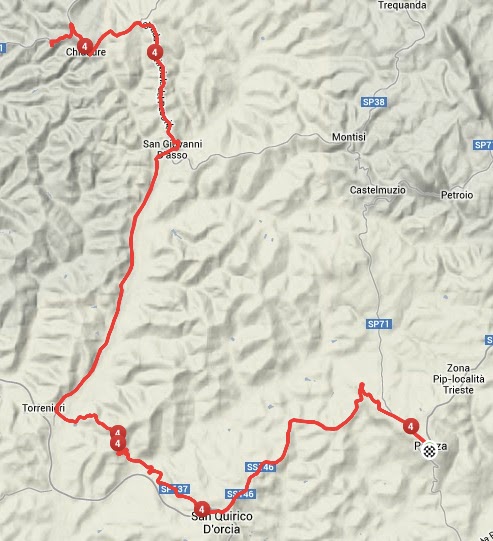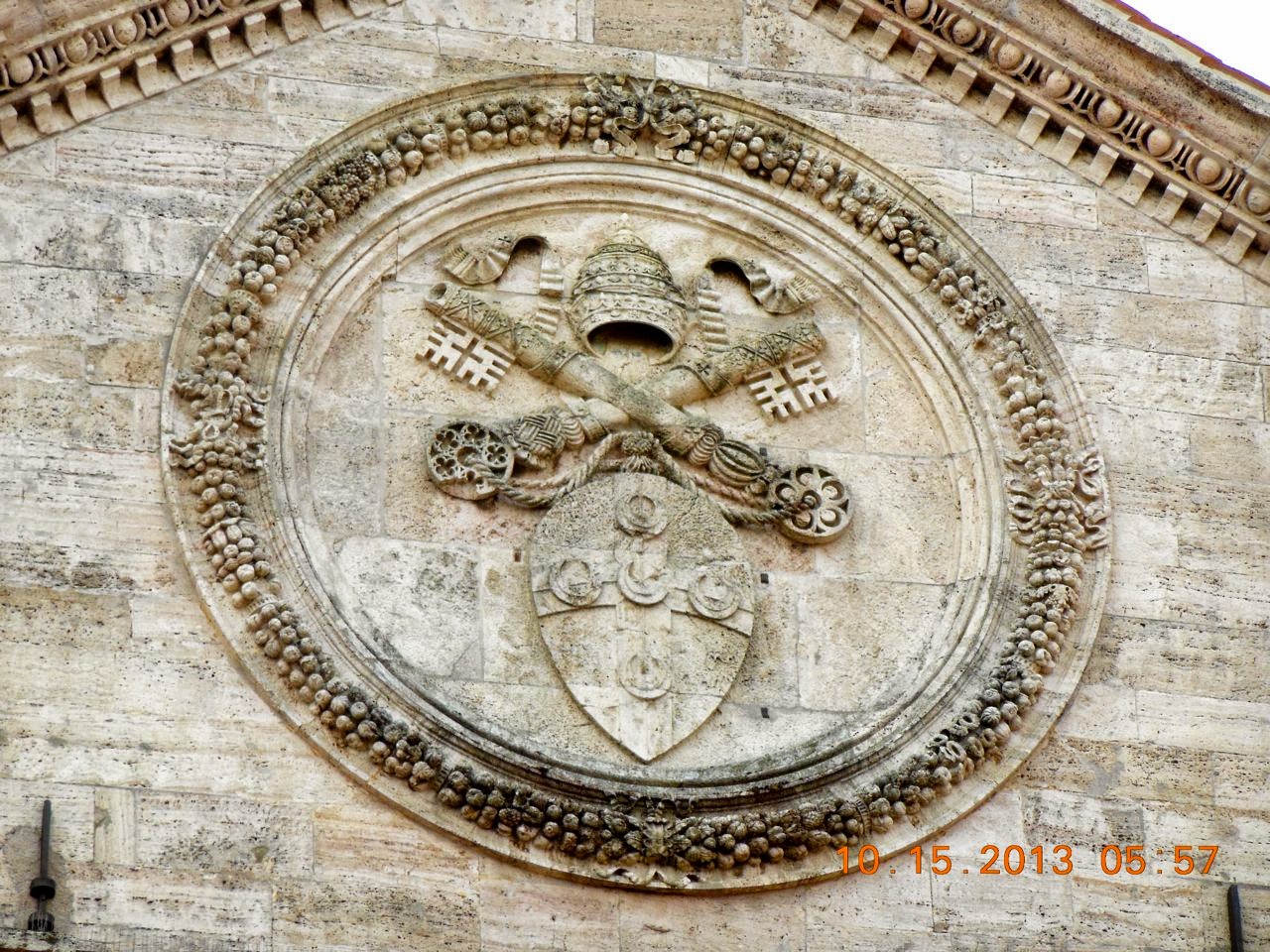Today, we got our hands on some really good wine. To explain how good it is, we have to provide a little background.
Wine in Toscana is defined by the Chianti’s. There are seven varieties...largely determined by geography. Colli Fiorentini comes from the hills near Florence. Colli Senese from the hills around Siena. Classico from the towns of Radda and Gaiole (among others). You get the idea.
In all, the various varieties of Chianti produce about 96 million bottles a year. All varieties of Chianti are based upon the Sangiovese grape. Sangiovese by itself tends to make a somewhat bitter wine, so six of the seven varieties blend in small amounts of other grapes to take the edge off.
There is only one of the seven varieties that can produce a Chianti made from nothing but Sangiovese grapes. That wine comes from Montalcino.
Montalcino is a small town in the Tuscan hills, about 25 km from our apartment in Pienza. The climate and soil combine to produce the king of all Chianti’s...Brunello.
 |
| The Fuligni Vineyard |
Just how good is Brunello? About 10 years ago, Wine Spectator magazine published an article on the 100 best wines in the world. Three of the top five were Brunello. In 2006, that same magazine named a Brunello the best wine in the world. The next year it wrote, “No wine in Italy matches Tuscany’s Brunello di Montalcino.”
There are 208 small wineries that are members of the
Consorzio Brunello di Montalcino (Brunello Growers Association). They control what constitutes Brunello by limiting where wine by that name can be produced (only 5,100 acres). It cannot be artificially watered and must be pruned to limit yield. Brunellos must be aged at least two years in oak barrels and can’t be sold until the fifth year after harvest. In 2008, the Consorzio successfully sued to prevent three wineries who did not meet these standards from calling themselves Brunellos.
Output is small by commercial winery standards. Less than 10% of Chianti's are Brunellos. Output from all 208 producers is less than half of what Chateau San Michelle sells in a year.
It was therefore with great anticipation that we rode our bikes up the hill to Montalcino (Cat 3 climb) to visit the Fuligni Winery.
 |
| Carol, catching her breath at the winery gate |
 |
| The Fuligni Winery |
As on our first visit five years ago, we were graciously greeted by the vintners (who at the time were in the midst of cleaning up their olives orchard in preparation for next week’s harvest).
We got the cooks’ tour of the winery...

 |
| The fermentation vats |
 |
| The aging cellar |
One aside...Vineyards in Tuscany often have rose bushes at the end of each row of vines. It’s not merely aesthetic. It turns out grape plants are susceptible to the same diseases as roses. If the roses are healthy, the grape plants probably are as well (kind of like the canary in the coal mine).

Just how goods are the Fuligni Brunellos?
 |
| A wall full of recognition |
Their 1999 vintage won second place in Wine Enthusiast magazine’s (Britain) “Top Hundred Wines.”
Wine Spectator has given them their critic’s choice award five times since 2001.
We've had the opportunity to drink their wine before, and "wonderful" doesn't begin to describe it.
Our ride today was 51.5 km with 1063 meters of climbing. Four Cat 4 and one Cat 3 climbs (although we think the climb from the Fuligni Winery back to Montalcino at 9% grade should also have been rated).
So far in Italy...
|
Total Distance
|
Elevation
|
Cat 4
|
Cat 3
|
Cat 2
|
|
1,319 km
|
17,491 meters
|
32
|
13
|
3
|























































